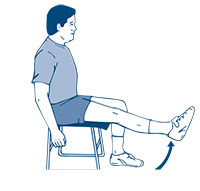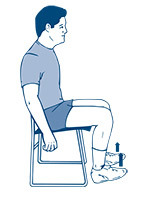Your healthcare provider would like you to include 5 grams of sodium (salt) in your daily diet to help control your syncope.
Please follow this guideline unless another healthcare provider has told you to limit the sodium in your diet.
5g = 5,000mg = just over 2 teaspoons of salt
Read nutrition labels to find out how much sodium is in a serving of food or drink, and add up the amount of sodium you have each day. Remember that the amount listed is per serving, so if you eat or drink more than one serving, count accordingly.
Or, you may prefer to put two teaspoons of salt in an empty shaker, and use it throughout the day.
How does sodium help control syncope?
Adding extra sodium to your diet:
- Causes your blood vessels to become narrow (vasoconstriction).
- Causes your body to retain fluid, which increases the amount of blood you have in your body.
- Helps prevent blood from collecting in your veins.
These all help keep your blood pressure from dropping too low, which can cause you to faint.
Other Ways to Prevent Syncope
Drink plenty of fluids
It is important to drink plenty of fluids to avoid getting dehydrated. Rather than setting a goal amount, drink fluids whenever you feel thirsty — especially in warm weather and during and after exercise. Drink water and/or electrolyte-balanced, caffeine-free beverages such as Gatorade or Powerade. If you have diabetes, choose low-sugar or sugar-free options. Beef or chicken broth and tomato juice are helpful fluids because they also contain sodium.
Increase potassium in your diet
Add more potassium-rich foods and drinks to your diet unless you have been diagnosed with high serum potassium. If you have diabetes, ask your healthcare provider about your dietary guidelines.
Some potassium-rich foods include:
- Dried fruits: Raisins, prunes, apricots, dates.
- Fresh fruits: Bananas, cantaloupe, oranges.
- Fresh vegetables: Beets, greens, spinach, peas, tomatoes, mushrooms.
- Dried vegetables: Beans, peas.
- Fresh meats: Pork, turkey, fish, beef.
- Juices: Orange, grapefruit, prune, apricot.
- Nuts and seeds.
Avoid large meals
Eat five to six small meals instead of three large meals per day. When you eat a large meal, more blood flows to your abdomen, which reduces the amount of blood circulating in your body. This can cause low blood pressure, especially if you stand right after you finish eating.
Avoid alcohol
When you drink alcohol, your veins get wider (vasodilation), which causes your blood pressure to drop.
Change positions
- Do not stand in one place for long periods of time. If you cannot avoid this, flex your legs from time to time until you can move around or sit.
- Take your time and be careful when changing positions.
- If you feel lightheaded, sit or lie down right away and elevate your legs.
Avoid getting overheated
When your body temperature goes up, your veins become wider (vasodilation), which causes your blood pressure to drop.
- Do not stand up quickly after taking a hot bath.
- Avoid standing in a hot shower. Instead, use a shower chair.
- If possible, avoid being outside when it is hot.
Avoid decongestants and too much caffeine
Decongestants and products that contain caffeine (coffee, black or green tea, dark chocolate, energy drinks, etc.) increase your heart rate and can cause you to feel lightheaded and/or faint. It is also important to avoid decongestants if you have high blood pressure. Some decongestants have a "D" after the name of the medicine. If you aren’t sure if a product contains a decongestant, ask your pharmacist or healthcare provider.
Exercise to build strength
Building strength in your thighs, legs and abdomen helps:
- Reduce the amount of blood that collects in your legs and lower body.
- Helps prevent feeling lightheaded and fainting.
Knee straightening

- Start by sitting with both legs in front of you, feet on the floor.
- Lift one foot off the floor and straighten your leg all the way.
- Put your foot back on the floor.
- Ask your healthcare provider how many times you should repeat the exercise with each leg.
Ankle pumping

- Start by sitting with both legs in front of you, feet on the floor.
- Keep your heels on the floor the whole time.
- Use your ankles to move your feet all the way up and down.
Walking and noncompetitive jogging also build muscle strength. When doing these, be careful not to become dehydrated or too tired.
Immediately after you exercise, sit down, elevate your legs and rest for at least 10 to 15 minutes. Drink water and a caffeine-free, electrolyte-balanced beverage. It is also a good time to eat a salty snack.
Wear compression stockings
Your healthcare provider may recommend that you wear compression stockings to improve blood circulation and reduce symptoms of syncope. These are especially helpful when you are traveling or need to sit or stand for a long period of time.
- Ask your healthcare provider about the strength and type of stockings that are best for you. A strength of 20 to 30 mmHg is often recommended, but you may need a different strength.
- Do not wear compression stockings while you sleep.